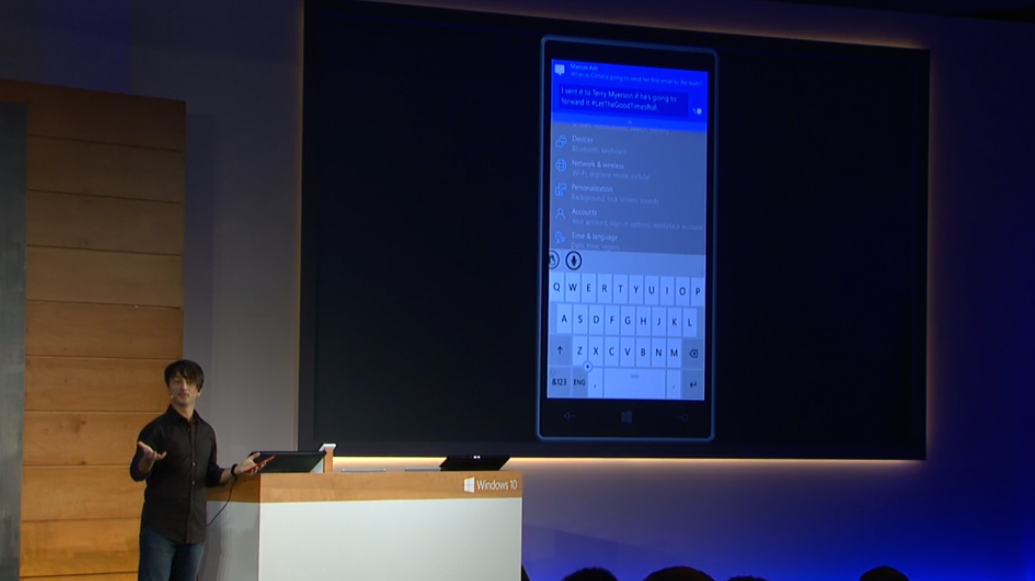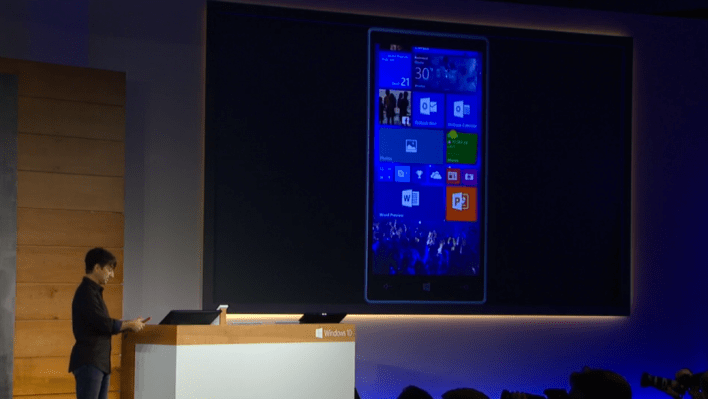Windows 10 was hailed at Microsoft’s special event today as a cross-platform OS that makes it easy to build once and ship to almost anything. Microsoft EVP of Operating Systems Terry Myserson said it was the “only platform that enables innovation across this broad range of devices.” Myserson kicked off the event with an overview of three key areas that are “ripe for innovation,” geared towards “improving our customers lives.” A core component of that was the so-called “mobility of experience,” which sounded a lot like what Apple is trying to accomplish with Continuity on Macs and iOS devices.
Getting content to and from devices is a challenge, per Myserson, and he suggested ways in which it should be improved, including single-gesture printing, transferring Skype calls, presentation control and more. Mobile, for MS, is about mobility across devices, he explained, not just mobile devices. Part of the mobile platform shows how MS is embracing that ideal.
Windows 10 works on mobile phones and tablets, of course, and there’s a version tailored specifically to fit devices smaller than eight inches. The start menu is similar to previous versions of Windows Phone, but there’s now a full-bleed customizable background underpinning everything. The Action Center now offers syncing with your PC’s Action Center, and gives you a more organized, better-designed Settings menu.

The software keyboard is totally repositionable by the user, which is unique among stock mobile touch-based input functions built into the OS. But what’s most impressive might be that IP-based messaging systems are able to be integrated directly into the Windows 10 mobile stock messaging app. That means Skype, for instance, can be moved directly in for text communication. Skype calling is also being built right into the phone.
Skype seems like it could become Microsoft’s universal communication standard, meaning that it can act as a Windows-based iMessage and FaceTime. The fact that it’s built-in should be good for the communication software’s position as a telephony and video chat standard, depending of course on increased adoption of Windows smartphone devices.
